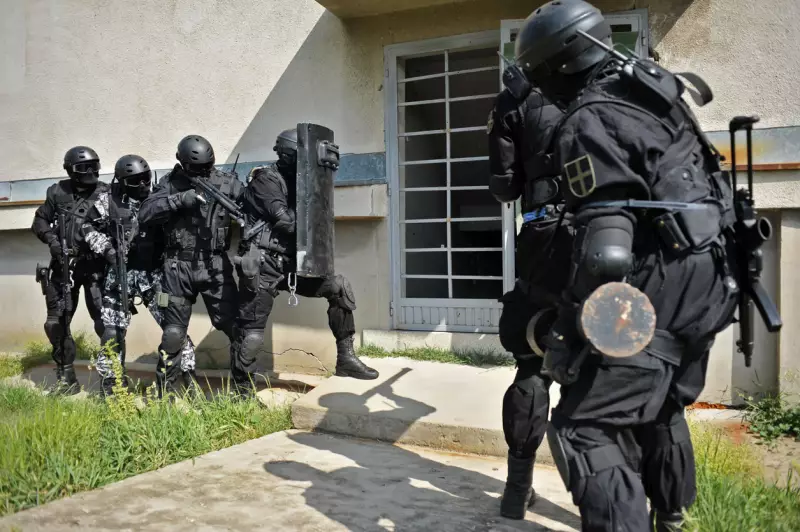What is Swatting and How to Prevent It
Table of Contents
- By Greg Brown
- Published: May 19, 2023
- Last Updated: May 24, 2023

Over centuries, harassment has been rooted in the global human condition. Modern America continues to grapple with intimidation, sexual abuse, bullying, and much more, all of which have severe implications for the victims. Ignoring the root causes of one person maliciously targeting another as a lower part of society is morally wrong.
Persistent and unwanted targeting has been inflamed in recent decades by the worsening of fundamental human rights. Every form of harassment, including a new insidious attack called swatting, has morally bankrupt people taking out their frustrations on the innocent.
What is Swatting?
Swatting involves a person or group reporting false crimes to the police and SWAT, such as bomb threats or hostage situations. These reports aim to invoke a full-scale police response to the target’s location. Gamers making fake calls would often live-stream the event.
Attackers use spoofing technology to anonymize their phone numbers. This tactic gives the swatter credibility with emergency services, making it appear that the call is genuine, originating from a victim’s number.
In the 70s, a similar activity took hold, called phone phreaking or phreakers. Individuals would reverse engineer specific telephone tones by manipulating the signaling process of the carrier. Phreaks would route long-distance calls to their targets, who would then be charged. Phreakers had a lot of fun manipulating the phone system until the FBI got involved.
Swatting began in the 80s and 90s as a way to prank another online gamer. In 2008, the FBI coined the term “Swatting” to describe the act of; calling in an emergency of epic proportions. The crisis had to be large enough to require a “SWAT” team response.
Toxic gaming calls in the 80s and 90s quickly found local and national law enforcement radars. Then 9/11 happened, and any venomous phone call was scrutinized. SWAT teams in American policing began in Los Angeles and gradually rose in popularity to become a standard police practice. The “fun” of swatting, with bomb threats and hostage situations, took advantage of this trend.
When Did Swatting Start?
Swatting began as a twisted practical joke, then escalated quickly into crime waves across the country. The New York Times reported on a particularly insidious swatting case in 2013.
A gamer who called himself Obnoxious terrorized women on a gaming site he frequented often. The gamer would get close to women by starting a conversation and chatting with them through the site. Once the relationship was established, Obnoxious knew their address, he would start making his demands. The gamer would dispatch swat teams to the address if the women did not send him explicit pictures. The women would be forced to watch parents, and other siblings handcuffed in the back of police cruisers. The FBI and local authorities eventually tracked Obnoxious down by his IP address.
Why Do People "SWAT" Others?
The FBI is on the offensive to ensure young people considering taking up the “fun” of swatting need to reconsider before making that call. The bureau points to the Matthew Weigman case as a real-life example of anyone who terrorizes through the phone will be prosecuted.
Matthew Weigman, a blind American, was 14 years old when he first started swatting. Weigman met a girl through an online chat room, and after a relationship was established, the girl refused to have phone sex with the young caller. Weigman convinced the 911 operator he was holding the two at gunpoint at their Colorado home, prompting the SWAT response. Matthew Weigman and nine co-conspirators became prolific phone hackers, terrorizing neighbors and law enforcement.
In 2009, Matthew Weigman was sentenced to eleven years for hacking into the Verizon Network and harassing an investigator building a case against him.
In 2015, the Interstate Swatting Hoax Act made it a federal crime to call in fake emergencies. Federal law prohibits falsely reporting bomb threats or terrorist acts. However, reporting other such emergencies are not banned. The Swatting Act closes this loophole, due primarily to the efforts of Congresswoman Katherine Clark
What are the Consequences of Swatting?

Even though swatting does not rise to the level of other FBI offenses, loathsome swatting pranks are dangerous and leave a lasting, ugly imprint on victims.
In December 2017, officers in Wichita, Kansas, responded to a hostage and kidnapping report. Local gamers got into a heated argument over a $2.00 bet, and one of them decided to use swatting as revenge. Unfortunately, the gamer gave Law Enforcement the wrong address. Andrew Finch, an innocent, local homeowner with no ties to the gamers, was shot and killed on his porch. The officer thought he was going for a gun.
Tyler Raj Barriss, a serial swatter, was sentenced to 20 years in federal prison on 51 separate charges.
School districts and universities nationwide have received multiple hoax calls describing hostage and shooting situations. Students and parents are terrified at the sparse news from the schools. Nationwide swatting sprees have left school districts and law enforcement scrambling for answers. The Swatting Act of 2015 is a step in the right direction.
The FBI has taken the threat of swatting seriously and works closely with school districts to find answers. Experts agree; answer your child’s questions with compassion and clarity about the relatively new threat of swatting. We may not know for years the psychological trauma that may develop in our children. We do know each child will handle this new menace according to their gifts.
Who are the Victims of Swatting?
Swatting has finally reached a level of national consciousness for the federal government to declare all-out war on these low-lives. The state of New York has been hit with waves of swatting attacks to the point of Chuck Schumer demanding the FBI launch a full investigation demanding new action. The Governor of New York, Kathy Hochul, has joined the investigation into the unprecedented wave of aggression against New York Schools.
Police departments serving 220 schools across NY have been hit with swatting calls of mass shootings, wasting untold thousands of dollars in community resources. The attacks have terrified NY and neighboring states.
It is clear the Interstate Swatting Hoax Act must be constantly updated to encompass new trends and technologies so our children are protected.
















